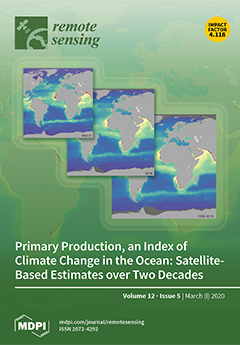Aerosol optical depth (AOD) has been widely used to estimate near-surface particulate matter (PM). In this study, ground-measured data from the Campaign on Atmospheric Aerosol Research network of China (CARE-China) and the Aerosol Robotic Network (AERONET) were used to evaluate the accuracy of Visible Infrared Imaging Radiometer Suite (VIIRS) AOD data for different aerosol types. These four aerosol types were from dust, smoke, urban, and uncertain and a fifth “type” was included for unclassified (i.e., total) aerosols. The correlation for dust aerosol was the worst (R
2 = 0.15), whereas the correlations for smoke and urban types were better (R
2 values of 0.69 and 0.55, respectively). The mixed-effects model was used to estimate the PM
2.5 concentrations in Beijing–Tianjin–Hebei (BTH), Sichuan–Chongqing (SC), the Pearl River Delta (PRD), the Yangtze River Delta (YRD), and the Middle Yangtze River (MYR) using the classified aerosol type and unclassified aerosol type methods. The results suggest that the cross validation (CV) of different aerosol types has higher correlation coefficients than that of the unclassified aerosol type. For example, the R
2 values for dust, smoke, urban, uncertain, and unclassified aerosol types BTH were 0.76, 0.85, 0.82, 0.82, and 0.78, respectively. Compared with the daily PM
2.5 concentrations, the air quality levels estimated using the classified aerosol type method were consistent with ground-measured PM
2.5, and the relative error was low (most RE was within ±20%). The classified aerosol type method improved the accuracy of the PM
2.5 estimation compared to the unclassified method, although there was an overestimation or underestimation in some regions. The seasonal distribution of PM
2.5 was analyzed and the PM
2.5 concentrations were high during winter, low during summer, and moderate during spring and autumn. Spatially, the higher PM
2.5 concentrations were predominantly distributed in areas of human activity and industrial areas.
Full article





